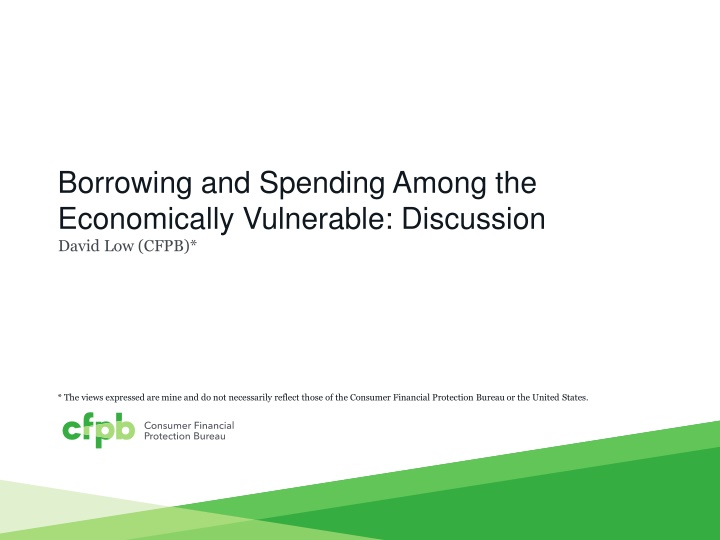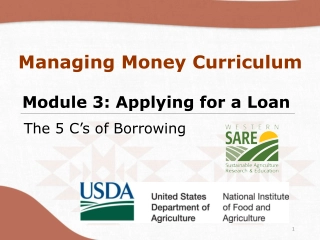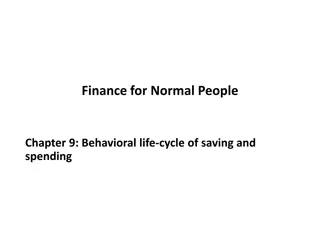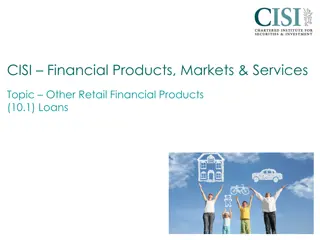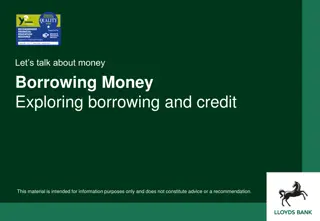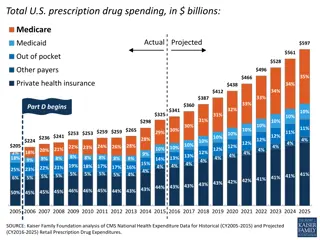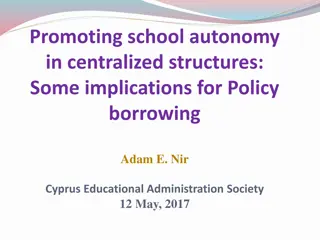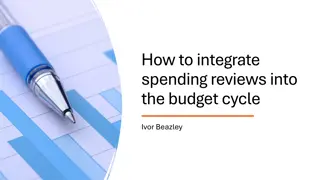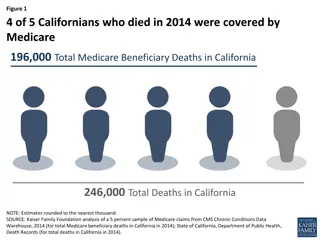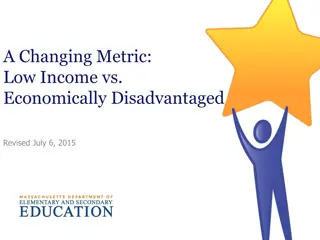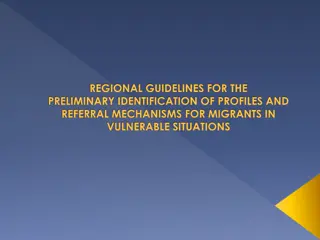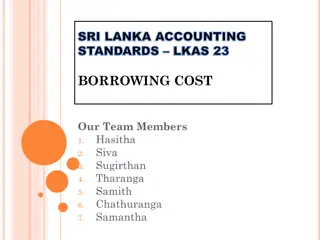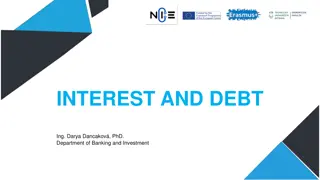Insights on Borrowing and Spending Among the Economically Vulnerable
Discussion by David Low from CFPB on consumer finance challenges, borrower behaviors regarding borrowing and repayment, and the impact of overdraft fees on financial inclusion. Key insights on payday loans, borrower amortization, and daily spending modeling are explored. Recommendations are made to improve financial decision-making and promote consumer well-being.
Download Presentation

Please find below an Image/Link to download the presentation.
The content on the website is provided AS IS for your information and personal use only. It may not be sold, licensed, or shared on other websites without obtaining consent from the author.If you encounter any issues during the download, it is possible that the publisher has removed the file from their server.
You are allowed to download the files provided on this website for personal or commercial use, subject to the condition that they are used lawfully. All files are the property of their respective owners.
The content on the website is provided AS IS for your information and personal use only. It may not be sold, licensed, or shared on other websites without obtaining consent from the author.
E N D
Presentation Transcript
Borrowing and Spending Among the Economically Vulnerable: Discussion David Low (CFPB)* * The views expressed are mine and do not necessarily reflect those of the Consumer Financial Protection Bureau or the United States.
Consumer finance is hard Three great papers with new evidence on important topics. Even simple facts can be huge contributions. But natural-seeming steps can be tricky. 2
Time to Repay or Time to Delay? Most payday papers study borrower outcomes: Worse (Melzer (2011), Carrell & Zinman (2014), etc.) Better (Morse (2011), Morgan et al. (2012), etc.) Now what? This paper studies borrower behavior One new, simple fact. Nice! Very policy relevant! 3
A few questions on empirical results 1. How does push off relate to borrowers failure to amortize? Fraction repaying depends on cycles, not time? 2. What if there s a fixed cost to visiting the lender? 3. Exogenous variation price dispersion. What else can we learn from this? 4
Big question on model: why daily? Consumption-savings models almost always annual or quarterly Implicit conventions, e.g. consumption=spending, CRRA preferences A daily model is very unorthodox. Consumption!=spending spending preferences are not CRRA. Days with 0 spending are extremely common. No one knows how to model daily spending. But risk-neutral preferences might be a good start. Higher risk aversion increases puzzle (Figure 8) so lower risk aversion lowers it Na ve present-biased results depend on daily procrastination I d recommend at least weekly model, with more time justifying modeling choices & parameters 5
Who Pays the Price? After preemption: Overdraft prices 1. More banks offered overdraft 2. Fewer checks bounced 3. More low-income households got accounts, and fewer lost them 4. Cool & counterintuitive: overdraft fees promote financial inclusion! but does that mean they re good for consumers? 6
I would drop the revealed preference argument Overdraft fees are shrouded, and it s not clear learning can salvage revealed preference. Two salient overdraft facts (e.g Liu et al. (2018)): 1. consumer inattention 2. checking account switching costs New accounts endurance is still really important! 7
What happens when good papers disagree? This paper: OD fees better consumer outcomes. Other papers: OD fees worse consumer outcomes. Either: 1. One of them is wrong or, 2. Full answer is more nuanced 9% of accounts pay 79% of OD/NSF fees. My posterior? 1. Marginal consumers are expensive to serve 2. Overdraft fees are efficient way to extract revenue from price- insensitive consumers 8
Tax Refund Uncertainty 1. Tax refunds are large and uncertain 2. Filers appear to have reasonable expectations 3. Uncertainty seems to arise partly from complex tax code 4. Uncertainty (??) large welfare losses Big contribution! Income uncertainty is important for consumer behavior & welfare (Zeldes (1989), Carroll & Kimball (1996)) Especially for LMI consumers 9
Quantitative tests more informative than qualitative? 1. Figure 2 plots std. dev. of beliefs vs refund surprise This is a qualitative test of beliefs. Why not quantitative? E.g. are credible intervals correct? 2. Why describe weighted average updating as Bayesian ? 3. tension between belief updating & correct expectations Figure 1b E.g. after lifecycle, macroeconomic or tax changes 10
Tax refunds are endogenous! EITC recipients overwithhold 12% of income (Jones, 2012) intentionally (Barr & Dokko, 2008) Is debt repaid a good proxy for debt borrowed? At least five explanations : 1. Underwithholding penalties (Highfill et al., 1998) 2. Forced saving (Thaler, 1994) 3. Loss aversion (Rees-Jones, 2018) 4. Inertia (Jones, 2012) 5. Risk in non-taxable income (Gelman et al., 2019) Could this paper contribute? E.g. does uncertainty favor (3) over (5)? 11
So what does the model tell us? We don t know which model is correct, but we do know base model is not: Base model with >2 periods precautionary wealth ( welfare consequences 0) Jones (2012): this model does not fit withholding data We don t know how people choose their refunds, so analyzing cost of uncertainty is hard. 1. Underwithholding penalties costs underestimated? 2. Forced saving costs overestimated? 3. Loss aversion costs underestimated? 4. Inertia costs overestimated? 5. Risk in non-taxable income costs are zero? If possible, I d recommend another round of the survey to elicit WTP to resolve uncertainty 12
Thanks! 13
